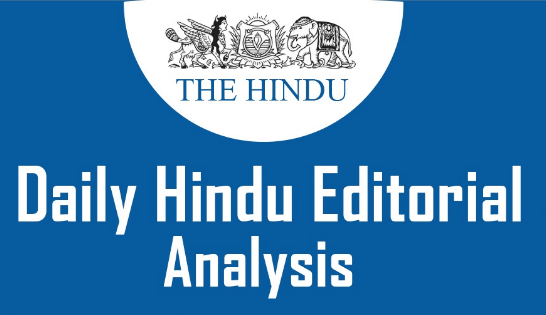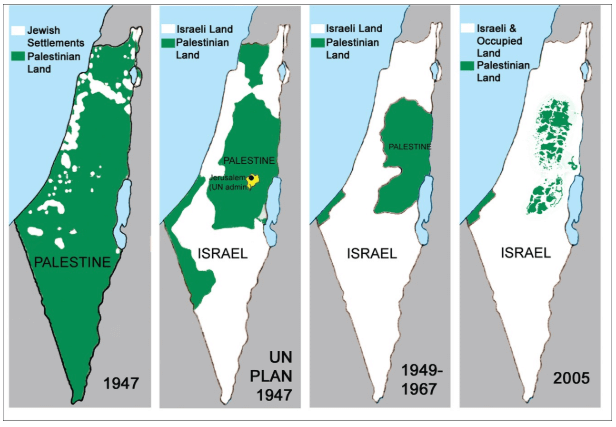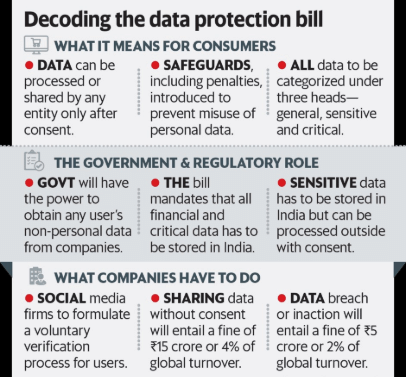15 August 2020: The Hindu Editorial Analysis | Additional Study Material for UPSC PDF Download

1. TALKING TOUGH: ON THE NAGA ISSUE
GS 3 (UPSC Syllabus) - Role of external state and non-state actors in creating challenges to internal security.
Context:
(i) Five years since the signing of a framework agreement between the Indian government and the National Socialist Council of Nagalim (Isak-Muivah), the deadlock in the talks that came about in October 2019 persists with the emergence of bottlenecks(hurdles).
(ii) The NSCN (I-M) has demanded that Nagaland Governor R.N. Ravi should be removed as the interlocutor(mediator) for talks on the Naga accord.

Parallel Government
(i) Talks were expanded in 2017 by including other Naga groups under the banner, the Naga National Political Groups (NNPGs).
(ii) Clearly, the Governor’s letter in June addressed to Chief Minister Neiphiu Rio, alleging the collapse of law and order and that armed gangs “who question the sovereignty and integrity of the nation” were engaging in “blatant extortion”, touched a sore spot for the NSCN (I-M).
(iii) While the group defended the practice by terming it “tax collection”, the letter was not entirely off the mark.
(iv) Yet, this has become an issue for the peace process with the NSCN (I-M) going on to release details of the 2015 framework agreement that has not been shared in the public domain so far.
(v) While the other Naga groups also took exception to the Governor’s remarks to the Chief Minister, they have differed with the NSCN (I-M) on the demand for Mr. Ravi’s removal as interlocutor.
Greater Nagalim
(i) Since 2015, the engagement with other Naga groups has increased, even if the NSCN (I-M) is perceived as the major rebel organisation.
(ii) The differences between the NNPGs and the NSCN (I-M) are not insignificant.
(iii) The NSCN (I-M) still insists on a “Greater Nagalim” beyond the boundaries of Nagaland State besides seeking a flag and constitution.
(iv) Most of the NNPGs based in Nagaland on the other hand have sought to settle the issue without disturbing the State boundaries while keeping the “Greater Nagalim” question in abeyance.
(v) Any moves to alter boundaries will intensify ethnic conflicts and insurgencies beyond Nagaland, especially in Manipur.
(vi) The increasing support in Nagaland for a solution without affecting boundaries should have compelled the NSCN (I-M) to move away from its intransigent position.
(vii) Instead, the rebel group has sought to redefine the talks process by expressing its lack of confidence in Mr. Ravi.
(viii) The NNPGs, political parties and other civil society organisations also took exception to the Governor’s stern letter that went beyond raising concerns over law and order.
(ix) Mr. Ravi wrote that functions such as the “transfer and posting of officials” in charge of law and order above the district level would be done with his approval.
(x) But they have delineated clear differences with the NSCN (I-M) on the peace talks issue.
Conclusion
(i) The Central government needs to take their concerns on board and reiterate its commitment to finalising the Naga accord while seeking to re-engage with the NSCN (I-M) without giving in to its arbitrary demands.
(ii) The Centre must re-engage with NSCN (I-M) without giving in to its arbitrary demands
2. LIMITED PEACE: ON UAE-ISRAEL PEACE AGREEMENT
GS 2 (UPSC Syllabus) - Effect of policies and politics of developed and developing countries on India’s interests.
Context:
(i) The peace agreement reached between Israel and the United Arab Emirates has formalised the thaw(calmness) in Arab-Israeli relations that has been under way for a few years.
(ii) As part of the deal announced by U.S. President Trump on Thursday, the UAE would recognise the state of Israel and establish formal diplomatic relations.
(iii) Israel too would halt(stop) its controversial plan to annex(occupy) swathes of the Palestinian West Bank.

Landmark Agreement
(i) It is a landmark agreement given that the UAE is only the third Arab country and the first in the Gulf recognising Israel.
(ii) It could pave the way for the region’s Sunni Arab kingdoms and the Jewish-majority Israel enhancing regional cooperation against their common foe, Shia Iran.
(iii) Israel has said it would focus on “expanding ties with other countries in the Arab and Muslim world”.
(iv) The U.S. has expressed hope that more Arab countries would follow the UAE’s lead — Arab-Israeli relations have largely been conflict-ridden ever since the state of Israel was declared in 1948.
(v) For Mr. Trump who played a critical role, it is a rare diplomatic victory just months before he seeks re-election.
(vi) His other foreign policy bets — Iran, North Korea or Afghanistan — were either disastrous or inconclusive. But in the case of Israel and the UAE, both allies of the U.S., quiet diplomacy worked.
(vii) The U.S. had arranged several meetings between Israeli and Emirati officials last year, which probably laid the foundations for the agreement.
1. While the deal has the potential to change Arab-Israeli relations for good, it also shows how the Arab countries are gradually decoupling themselves from the Palestine question.
2. The UAE offered full diplomatic recognition in return for Israel’s suspension of a planned annexation, not for any relaxation of the actual occupation.
3. As Prime Minister Netanyahu said, Israel made peace with an Arab country without “our returning to the 1967 borders”.
4. The Arab Peace Initiative, a Saudi Arabia initiative endorsed by the Arab League, offered recognition to Israel in exchange for its full withdrawal from the occupied territories.
5. Ironically, the UAE’s peace agreement comes close on the heels of the Trump administration’s back-to-back decisions to recognise Jerusalem as Israel’s capital and its sovereignty over the Syrian Golan Heights.
6. Clearly, the UAE has moved away from the Arab initiative.
7. The question now is whether the Emiratis would be able to press the Jewish state to relax its inhuman and illegal occupation of the Palestinian territories and start talks between the occupier and the occupied.
8. If it cannot, the UAE-Israel deal would be of little significance for the Palestinians.
Conclusion
The Palestinian leadership, on its part, should understand the emerging reality in West Asia — the Arab-Israel conflict is coming to a close, but the Palestine-Israel conflict is to continue without any respite.
3. DEMOCRACY NEEDS AN INTERNET OMBUDSMAN
GS 2 (UPSC Syllabus) - Important aspects of governance, transparency and accountability
Context:
(i) In any triangle of relationship, trust is the first casualty.
(ii) In the interplay between government, companies and citizens for big data, information asymmetry has become so skewed(one-sided) that it has eroded the very spirit of democracy by limiting the unbiased communication of ideas.
(iii) Governments and private companies are using the Internet as ‘a means of control and surveillance, extending from cases of fraud detection, storage and exchange of criminal and financial records to those of political surveillance and control’.
(iv) Citizens who receive a flood of unfiltered information, information with colour but no patterns, information with images that can never add up to the real picture, recirculate the same back into the infantile(immature) world for greater chaos.
No Security
(i) The Internet is the new jazz and a tool as also a venue for all political hues(shades).
(ii) It is important to understand how government, political parties and citizens are responding to this new triangular interplay between data protection, privacy and a flow of information.
(iii) When the Government of India banned 59 Chinese apps on the ground of transgressing Indian security, the question as to why in the first instance were they allowed into India did not get sufficient importance.
(iv) Was there no security or privacy audit? While Facebook and Amazon are facing scrutiny on their own soil for their data mining policies, how did we allow so many apps without any check?
(v) Government policy on national security should be based on advance strategic assessment rather than on a reactive basis.
‘Control’ And Data Theft
(i) On the privacy front, even after the SC had declared privacy as a fundamental right, the government insisted on affidavit in the top court that informational privacy or data privacy cannot be a fundamental right.
(ii) The Aadhar Act diluted the notion of ‘privacy’ and the standard of proportionality test set up by the Supreme Court.
(iii) In an ongoing dilemma, even the ‘Aarogya Setu’ app is battling to satisfy the conscience of privacy overseers.
(iv) The clear impression is that the government is more interested in ‘control’ than ‘protection’ of data. A national policy on data privacy of individuals is still a non-starter.
(v) People continue to suffer because of the regular incidents of data theft. India’s cybersecurity watchdog, CERT-In, last year reported huge data theft of Facebook and Twitter users by malicious third party apps.
(vi) Reportedly, more than 1.3 million credit and debit card details from Indian banks and the data of 6.8 million users from an Indian health-care website were stolen in the same year.
Private Firms And Elections
(i) Private data analytics companies have emerged to exploit the electoral process with the sole objective of customising political messaging.
(ii) While the customisation of political messaging is not per se illegal, it certainly is unlawful to indulge in unauthorised data mining and collection by the industry.
(iii) According to a report by Omidyar Network India and Monitor Deloitte, many private enterprises routinely share the personal data of individuals with third parties including political organisations.
(iv) The fact that there are dedicated IT cells which carry out a digital form of warfare with propaganda and fake news being two powerful weapons is making things more complicated.
(v) The present legal framework leaves these menaces outside the ambit of election laws as they were framed in a time and space that was primitive when compared to contemporary technological advancements.
(vi) For citizens, digital media are carriers of images and sounds, rather than words and thoughts, and the system where images run faster than thoughts is suitable for the spread of fake news.
(vii) Times of fear and uncertainty also provide a fertile ground for disinformation to grow.
(viii) The fake WhatsApp forwards that triggered the primitive “Us v/s Them” group mentality and is manifested in Delhi riots reports, and the forwards on the novel coronavirus which declare COVID-19 a bacteria and the World Health Organization stating that vegetarians cannot be infected with COVID-19, are all reminders of the potency of data, true or false, in a democracy.
Regulation And Independence
(i) Should there be a gatekeeper to balance appetites for technology, security and privacy?
(ii) The answer is yes, so long as the gate keeper is for regulation, not surveillance, and so long as it is completely and genuinely independent. Otherwise it will perform an unacceptable legitimation function.
(iii) The Personal Data Protection Bill, struggling to be born in Parliament despite conception in 2018, is more about control and surveillance than about promoting privacy and protection of data.
(iv) Far-reaching exemptions, in large measure swallowing the rule, have been carved out where personal data can be processed.
(v) Section 35, which provides the government with unfettered access to personal data, negates the three tests of legality, necessity and proportionality given by the SC.
(vi) The Bill also allows State and private parties to process personal data without obtaining consent.
(vii) Such broad exemptions would not only open the floodgates for misuse but also reduce India’s prospects of entering into bilateral arrangements for law enforcement access.
(viii) Selection committees, terms of appointment and of removal establish beyond doubt that the Authority is likely to be like a rehabilitation centre for retired bureaucrats, yet a sinecure wholly controlled by the government.
(ix) It is a classic case of rolling up judge, jury and executioner.
|
21 videos|562 docs|160 tests
|
FAQs on 15 August 2020: The Hindu Editorial Analysis - Additional Study Material for UPSC
| 1. What is the significance of 15 August 2020? |  |
| 2. What is the Hindu Editorial Analysis in UPSC? |  |
| 3. What are Frequently Asked Questions (FAQs) related to The Hindu Editorial Analysis in UPSC? |  |
| 4. How can I improve my reading and comprehension skills through The Hindu Editorial Analysis? |  |
| 5. Can The Hindu Editorial Analysis help in preparing for UPSC exams other than improving reading skills? |  |
















